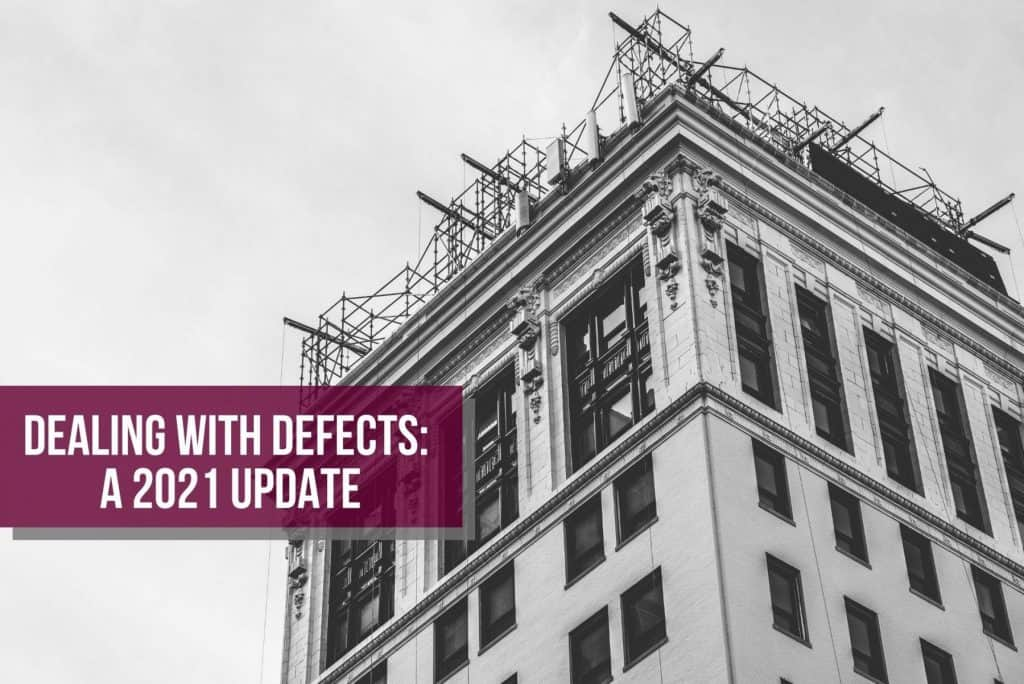
Social Mediation. The technologies improving strata disputes
February 26, 2021
Think solar power is a home-owners game? Think again.
April 20, 2021
Social Mediation. The technologies improving strata disputes
February 26, 2021
Think solar power is a home-owners game? Think again.
April 20, 2021
Dealings with Building Defects in Strata: A 2021 Update
Propelled into the headlines by the Lacrosse Apartments fire and the Opal and Mascot Towers cracking issues – building defects have sent shivers down the spines of strata property owners and communities in recent years. Now in 2021, years on from the dawning of the building defects issue – where do we stand?
New regulations and reviews abound
NSW
VIC
New tools are available to owners
So with all this new information in hand, has the theory changed on how to deal with this issue? To our mind, the answer is no. At the end of the day – the fundamental process remains the same. Here is our helpful step by step checklist for dealing with defects in your community.
Do your homework
The relevant building authorities and commissions in most states & territories see building defects in two distinct lights. Structural defects – this covers things like a faulty roof, building movement, and issues that impact on the health and safety of an occupier. Non-structural defects – these are defects which are more functional and cosmetic such as sticking doors or windows, minor cracking of plasterboard, etc.
Based on our knowledge of each state and territory’s authorities, the following may not be investigated by them;
Raise defects with your Strata Manager and engage the right experts at the right time.
Don’t waste time - liability periods can expire quickly
For example, in QLD, if your contract was entered into prior to 10 October 2014, you must lodge a complaint within 3 months of noticing a structural defect that appears within 6 years and 3 months from practical completion and you have up to 7 months after practical completion to lodge a complaint for non-structural defects. And in NSW, For major defects the time in which to claim statutory warranties is 6 years (with a 6 month extension if a building defect becomes apparent during the last 6 months of the statutory warranty period) or for non-major defects owners of the building have 2 years (with a 6 month extension if a building defect becomes apparent during the last 6 months of the statutory warranty period) to report defects.
Speak to your Strata Manager
Strata Managers are your asset in situations like these. The ability to navigate legislation, understand the timings of when complaints need to be made is crucial in getting the result you want and that’s why strata management is so important.
It is important to note however that whilst all common property defects are to be reported to your strata manager, all internal lot defects are to be reported directly to the builder.
The strata manager is on hand to pass reports of common area defects on to the builder, along with all other common property defects notified to them by various owners/residents.
Speak to your builder/contractor
In the event of private lot defects, see if issues can be resolved without involving a third party. Make sure that all defects are clearly outlined and documented. Give the builder a reasonable length of time to respond and begin repairs.
Take the matter before the authorities
If issues cannot be resolved with the builder, take it before the relevant authorities in your region. The purpose of taking it further and contacting an Office of Fair Trading, Consumer Affairs Department or Civil Tribunal is to assist with dispute resolution.
Either you or the trader can formally request for Fair Trading to assist, but both parties need to agree to the attempt at resolution.
So that you’re ready for this process, make sure you have the following information ready including:
The authority receiving your contact may also require the following documentation:
Seeking further advice?
If you wish to discuss any strata community matters further with an Ace Body Corporate Manager, please do not hesitate to visit our contact page and locate your nearest Ace Manager for a chat.
www.acebodycorp.com.au

